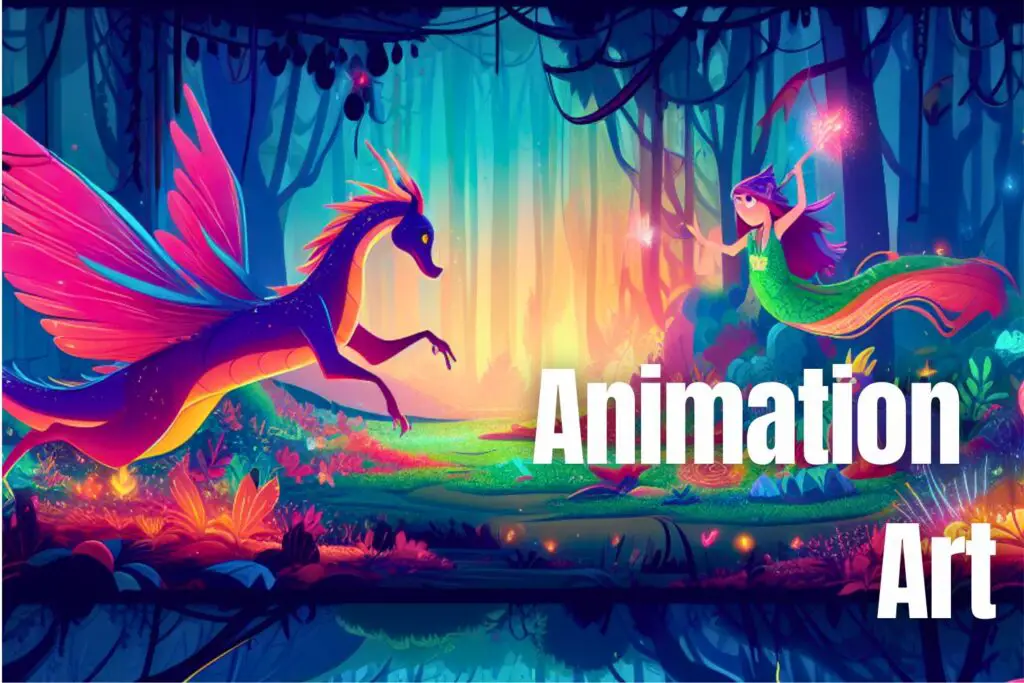Animation art is a unique and inspiring art form that brings drawings, characters, and stories to life through movement and expression. For animation enthusiasts, collectors, and aspiring artists alike, animation artwork captures imagination and emotion unlike any other medium.
The article explores the world of animation art in depth – its history and evolution, different techniques and styles, artistic skills involved, technology’s impact, and advice for collectors and artists.
Animation has captivated global audiences for over a century, from timeless Disney classics to modern CG blockbusters. But behind the incredible movies and shows lies incredible artistry – the raw animation drawings and paintings that breathe life into beloved characters. Animation art captures fleeting moments of movement and expression, distilling a scene’s emotion and kinetic energy into a single frame.
For animation fans and art lovers, animation cels, drawings, and other production art present a unique opportunity to glimpse the filmmaking process. As animation continues to gain recognition in the art world for its rich history and technical virtuosity, these artifacts of animation history are also increasingly valued as fine art.
Table of Contents
What is Animation Art?
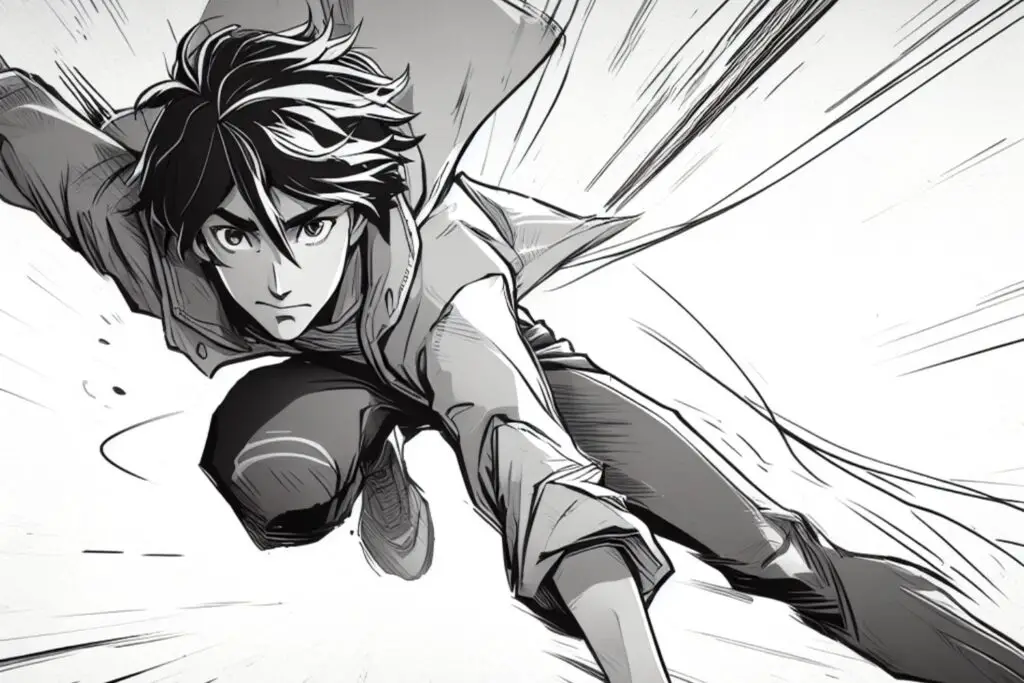
Animation art encompasses the original, hand-drawn artworks that bring animated characters and films to life through sequenced images that create an illusion of movement. This specialized art form includes concept art, character model sheets, layout drawings, keyframes, backgrounds, cels, and other production materials that form the foundation of animated movies, TV shows, and shorts.
Is it just drawings for cartoons?
While “cartoon” has become synonymous with animation, it’s a limiting term. Animation art spans various styles, genres, and applications – from classic Disney fairytales to stylized anime to 3D Pixar films and avant-garde indie shorts. It’s an incredibly diverse art form.
Why is it considered a unique art form, distinct from regular illustration?
Animation artwork brings an extra dimension that static illustrations lack – the elements of time, sequential movement and personality acting. Animators create the illusion of movement and expression by drawing incremental changes across film frames. Good animation art captures emotive poses, conveys weight and gravity, and brings characters to life through effective acting and movement.
Can Animation Art exist without Traditional Art Forms?
Traditional hand-drawn animation art gave rise to the medium’s language of movement, expression, and visual storytelling, which still dominates. And while 3D, CG, and AI expand possibilities, classical animation principles around these innovations. The fundamentals of appeal, silhouettes, anatomy, acting, and timing apply regardless of medium. So, while technology progresses animation art, the roots remain firmly in classical art forms.
What are the Different Types of Animation Art?
There are several distinct forms of animation art:
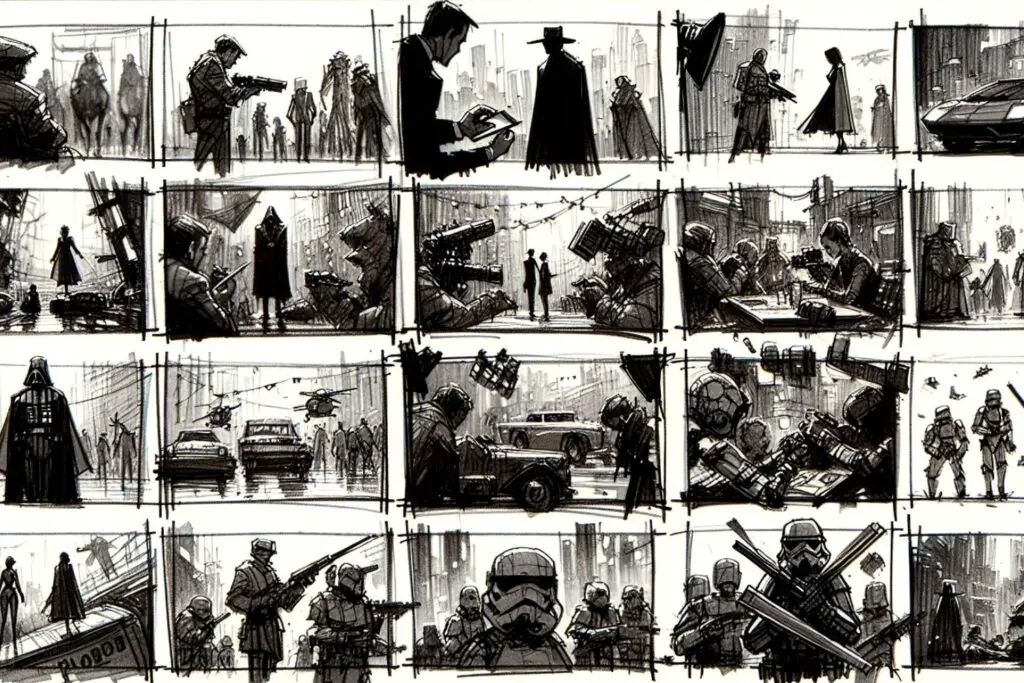
- Concept Art: Early sketches visualizing stories, characters, settings and styles.
- Storyboards: Sequence of drawings planning shot compositions, camera angles and pacing.
- Layout Drawings: Blueprint background paintings determining staging and perspective.
- Key Frame Drawings: Dynamic poses capturing pivotal story moments.
- Inbetweens: Bridging drawings between keyframes to smooth motion.
- Backgrounds/Cels: Hand-painted backgrounds overlaid with celluloid sheets featuring animated characters.
- Production Cels: Images transferred from original art onto cels for photography.
- Color Models: Reference sheets of character/prop colors.
- Model Sheets: Blueprints illustrating characters’ angles and expressions.
What are the General Tools used for Animation Art?
Traditional media reign supreme in animation art and the following are a few drawing tools:
- Pencils allow quick sketching, control, and eraseability sought by animators. Variables like hardness and looseness/detail contribute to desired styles.
- Pens and ink add definition and contrast. Tools like dip pens, ink brushes, and airbrushes create smoothing lines or dry-brush texture effects.
- Paint brings color, dynamism and mood. Media like gouache, acrylics, markers, and watercolor add unique textures and behavior.
- Digital tools like tablets, scanners and software help assemble traditional art sequentially or mimic classical techniques digitally. But the principles remain rooted in hands-on media.
What are the Essential Skills required for Animation Art?
Animation artists need diverse artistic abilities plus specialty skills tailored to animation:
- Drawing: Skill Foundationally critical. Anatomy, perspective, and silhouettes must communicate emotion.
- Caricaturing: Exaggerating shapes and features for maximum appeal and personality.
- Acting: Conveying expression, mood, and reaction through pose and micro-movements.
- Motion: Capturing weight, gravity, squash/stretch, and timing through sequential drawings.
- Storytelling: Distilling narratives visually via composition, sequence and expressiveness.
What are the Different Techniques Used in Animation Art?
A diverse array of specialized techniques bring animation to life through the illusion of movement. It starts with keyframes capturing pivotal story moments and emotional arcs through dynamic posing. In between frames, connect the keys to flesh out fluid transitions between poses.
Techniques like squash and stretch, overlapping action, anticipation, follow through, and exaggeration layer secondary movement, gravity, timing, tension, and appeal. Other foundations include digital and cel animation character rigging, walk cycles, particle effects, dynamic simulations, and camera and lighting techniques. The interplay of these various techniques creates animation magic.
How does each technique contribute to the life and movement of the artworks?
Keyframes capture decisive story moments through emotive posing. Inbetweens connect them, breaking action into micro-steps for fluidity. Squash and stretch add weight, bounce, and gravity. Overlapping action creates natural secondary movements. Anticipation builds tension before main actions. Follow-through shows residual movements after. Exaggeration energizes posing. And appeal infuses draw ability and intrigue.
Cels interlays characters with backgrounds. Ink lines contain their shape, while textures and color fills suggest dimension. The cel overlay creates depth.
What are some examples of artworks that effectively use these techniques?
From Snow White’s evil queen transforming in fantastical squashes and stretches to the planted anticipation before Dumbo’s soaring leap – Walt Disney Animation set the standard. Anime explosions utilize extreme exaggerated anticipation. Steven Universe characters flow with secondary movements, embodying personality in every frame.
Into the Spiderverse fuses comic stylization with squash/stretch elasticity and dramatic angles. Wallace and Gromit’s understated humor and warmth rely on nuanced acting choices. The techniques behind animation art language are ubiquitous yet wildly diverse in application.
What do you call an Artist who creates Animation art?

Animators create animation! Within studios, the role comprises storyboard artists, layout artists, background painters, character designers and special effects animators. 2D animators handle hand-drawn art, while 3D focuses on digital spaces. Clean-up artists refine rough key drawings into final cels. It takes an army of artists across specialties to breathe life into even short animations.
How do Animators Capture Movement and Emotion from Static Image?
By harnessing the fundamentals of animation through every frame! Principles like squash/stretch, anticipation, secondary action, exaggeration, and appeal turn static images into illusions of life by controlling what changes over a sequence of drawings.
Line-of-action poses and intentional asymmetry make poses dynamic. Strategic use of facial features, sensor triangles, and body language accentuate acting choices. The strategic application of these techniques makes successful animation so emotive.
What is the Role of Color and Design in Animation Art?
Huge! Color and design encapsulate mood, style and personality. Dynamic character silhouettes immediately capture attention. Color palettes create ambiance and temperature. Stylization builds self-contained worlds where physics can be pushed.
Overlapping translucent cels generates visual depth. Color scripts map out color progression in films. Vibrant animation worlds spring from bold design anchored in artistic principles – exemplifying animation art’s imagination and vision unchained from realism.
What is the Importance of Characters Design in Animation?
Paramount! Iconic characters become animation’s heart and soul. Distinct silhouettes, appealing features and visual metaphors manifest personalities. Disney’s extremes demonstrate the power of character design – sympathizing with monsters in Beauty and the Beast by humanizing beastly appearance.
Pixar’s Wall-E mainly has binoculars for eyes yet profoundly expresses emotion. Memorable characters allow storytelling shorthand, anchoring merchandising potential across generations. Even abstract shapes exude personality in classic shorts by Kandinsky or Oskar Fischinger – wherein design communicates style.
What is the History of Animation in Art?
Animation boasts an extensive, intertwined history with art spanning over a century of creative innovation. It emerged from the newspaper comic strips of the late 1800s from pioneers like Winsor McCay, whose fantastical animated shorts like Gertie the Dinosaur pushed boundaries in personality and perspective.
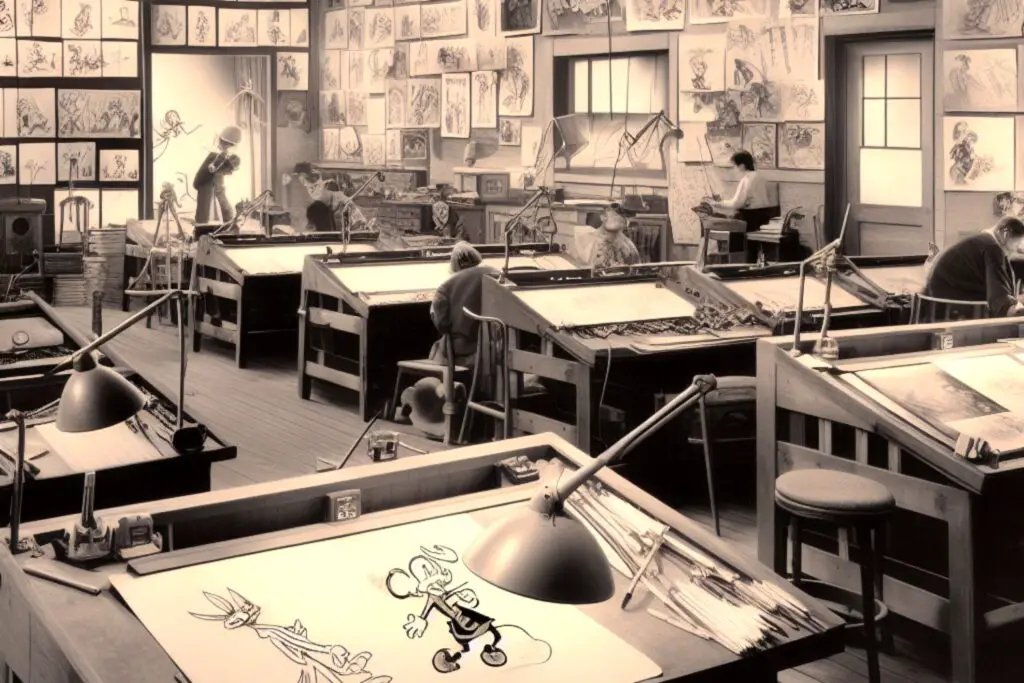
Technicolor and Silly Symphony advancements accelerated Walt Disney Studios’ golden age dominance through beloved classics like Snow White, Dumbo and Bambi during the 1930s/40s.
This visual spectacle era ceded to the stylized limited animation movement from studios like UPA in the postwar 1950s. Television expanded animation possibilities in the 60s before facing artistic stagnation and cost concerns.
The 70s seeded eco-conscious and adult animation before CGI revolutionized production in the 90s. Now, animation thrives across cultures and platforms in endless inventive diversity, continually evolving new styles, techniques, and technological integration as both a lucrative industry and an acclaimed artistic form across mediums and cultures.
Can animation art influence the concept of art history?
Absolutely! Animation marched in lockstep with cinema history from infancy. Disney pioneered numerous innovations like Technicolor and surround sound alongside live-action films. Abstract animators like Oskar Fischinger pushed the boundaries of motion graphics with visual music and poetry. Anime reframed budget limitations into stylistic choices that hugely impacted global animation and comics.
As mainstream medium recognition grows, animation competes for prestigious film awards, including Best Picture. Just as impressionism or contemporary movements redefined eras of fine art, animation movements reveal snapshots of art history worthy of study and appreciation.
How do Technology and Digital Tool Impact the creation of Animation Art?
Technology expands possibilities for creating and appreciating animation art while retaining traditional principles from early Flipbooks to rotoscoping projectors to modern tablets.
What is the Impact of Artificial Intelligence on Animation Art?
AI now generates hyper-realistic textures, assists with in-betweening, and helps produce 3D models. But the role of human artists remains paramount in imagination, emotion, and appeal – elements AI still fails to replicate, so while technology assists production, artistry springs from human hands, heads, and hearts.
What Makes Animation Art Valuable to Collectors and Investors?
Scarcity and demand drive value amid finite artifacts of film history. One-of-a-kind pieces like hand-inked cels from before digital dominate value. Drawings of iconic scenes or characters also draw interest.
Mickey Mouse consistently leads in collection value – an identifiable smiling mouse who rebranded animation’s place in a collective culture. Yet hype can overshoot actual market prices, requiring collector savvy. Broadly, though, prominent animation art captures hearts and minds, translating into monetary worth.
Can Animation Convey Complex Themes, Emotions, and Social Messages?
This versatile art form has matured with modern audiences in subject matter – tackling complex philosophies, shadows of the psyche, societal dysfunction, and relationships with profound emotional intelligence and nuance.
From allegorical graphic novels like Maus on Holocaust trauma or Persepolis exploring Iran’s revolution to the mental health struggles of Bojack Horseman or poignant latest films from Pixar and Cartoon Saloon exploring self-worth, prejudice, loss, and death through animation’s timeless emotional shorthand – the depth continues expanding.
Animation provides safe vehicles to explore sensitive themes that live-action struggles with. Ultimately, though, great storytelling and relatable characters resonate regardless of the medium. Animation offers uniquely whimsical packages stowing harsh truths inside a utopic fantasy and sweet levity to temper gravity.
What are the Tips for Preserving your Animation Art Collection?
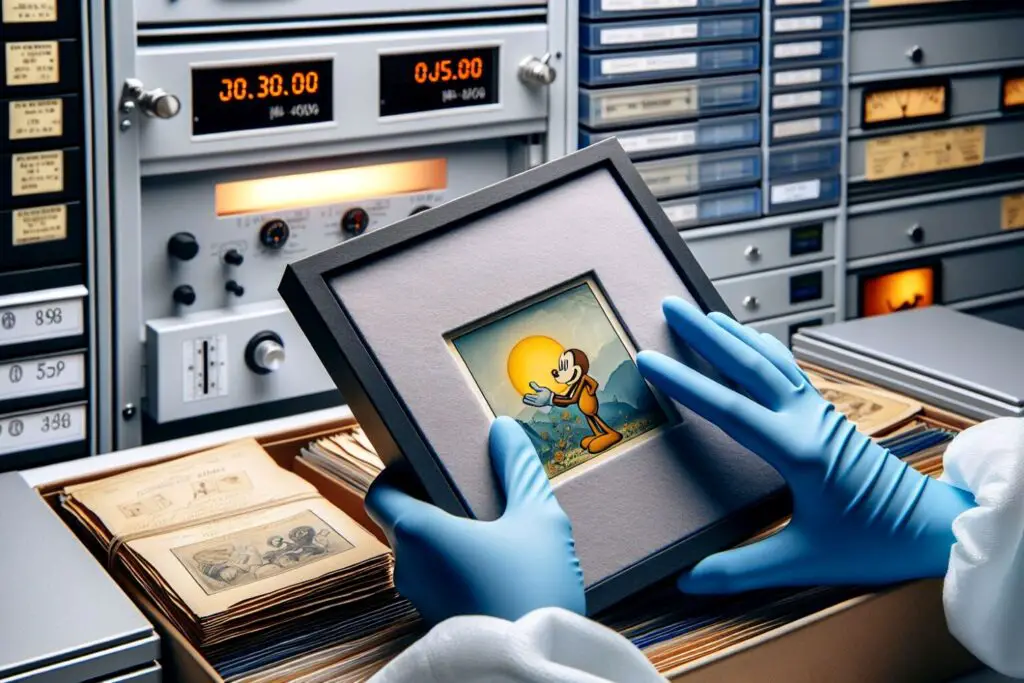
The following are the tips for caring for and preserving animation art collection, each explained:
- Properly store animation art using archival materials. Use acid-free boxes, sleeves, glassine envelopes, and matting to prevent yellowing and deterioration. Keep storage areas climate-controlled, clean, dark, and dry.
- Handle animation cels and drawings carefully by the edges to prevent smudging delicate artwork. Consider wearing cotton gloves while handling. Never touch the painted side of a cell.
- Frame animation art tastefully using UV-protective plexiglass and acid-free matting and backing. Quality professional custom framing helps conserve the art over decades.
- Keep extensive documentation about your animation art collection, including certificates of authenticity, appraisals, provenance paperwork, and catalog records. This preserves collection history.
- Insure your collection appropriately through specialty animation art insurance policies that cover unique risks like film shrinkage or cel warping. Appraise and inventory regularly.
- Seek professional conservation assistance if you notice any flaking, paint loss, warping, mold or other deterioration in older animation cels or drawings. Gentle restoration helps counter natural aging issues.
- When displaying a collection, rotate artworks to spread out light exposure. Cels and drawings kept permanently on lit walls tend to fade quickly. Give pieces “resting time” in darker storage to prolong vibrancy.
Is animation art a valid form of artistic expression?
Absolutely! Animation represents imaginative heights only limited by skill. As an art form, it utilizes diverse traditional techniques alongside pioneering creative technology to manifest the impossible. Animation also fuels immense economic impact between beloved films and multimedia empires built upon the medium’s expressive appeal.
What advice would you give to aspiring animation artists?
Immerse in the fundamentals – life drawing, motion studies, and acting choices to harness the medium’s immersive magic. Anchor creativity with artistic principles, animation history and color theory fueling visual development skills. Master software and technology as tools, not crutches. Collaborate across specializations and nurture a unique animation voice through diverse projects. Patience and perseverance Furrow past derivative imitation into fresh zeitgeists.
How can you identify authentic animation art?
Study studio logos, animator marks, medium traits, and backings to learn signatures of studio art provenance. Acquire documentation like certificates of authenticity. Consult reputable galleries, auction houses or appraisers to authenticate and conserve rare finds.
How does animation art influence the way we appreciate art?
It reveals art in motion! Appreciating Art, the invisible process behind moving illusions allows deeper immersion into artistic deliberation. We discern cross-disciplinary mastery fusing technology, acting, emotion, sequential narrative, and calculated chemistry. Animating lifeless pencils leads to enduring icons, establishing tipping points for global communal bonding beyond language barriers.
Can animation art affect the interpretation of art?
It expands definitions! Metamorphic possibilities liberated from realism welcome radical abstract styles as valid art movements interacting with eras of traditional fine art. Interpretations fuse commercial appeal with personal expressions, balancing profit with meaning, sometimes subversively smuggled under kid-friendly Trojan horses ushering challenging ideas into societies otherwise averse to overt disruption of the status quo. Shifting symbols craft cultural touchstones, redefining generations.
How does animation art interact with the concept of art movements?
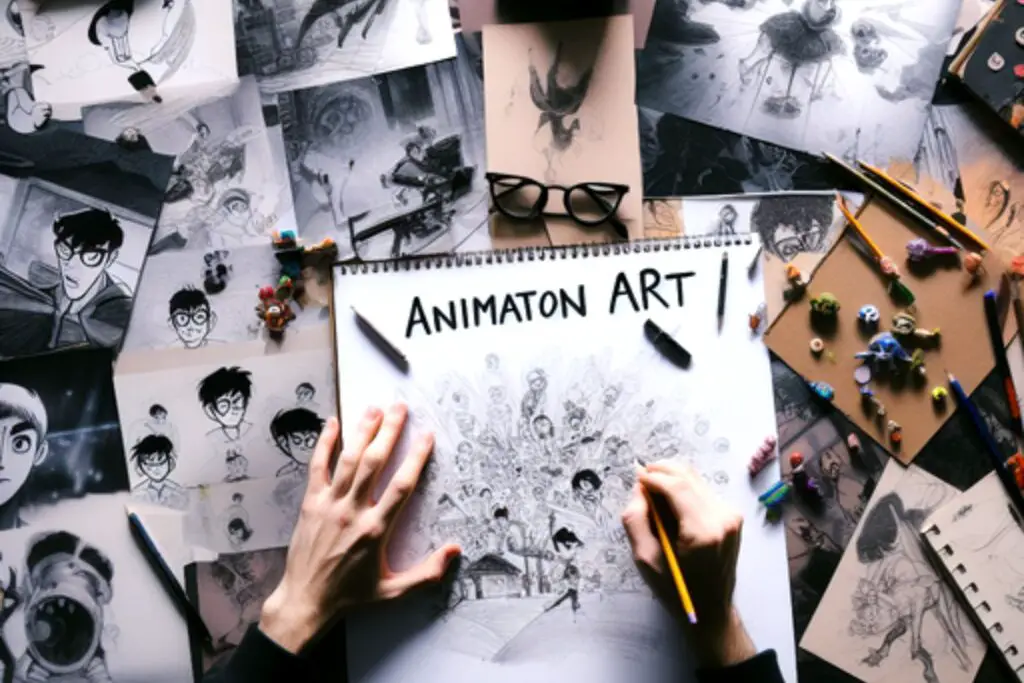
It parallels and informs them. Stylistic innovations mirror responding to economic pressures and tools of respective eras. Abstract Expressionism echoed Fantasia. Anime stylizations mirror contemporary trends. Even avant-garde pushes into interactive media, projections, and installations build upon the traditions of pioneers like Oskar Fischinger.
Commercial animation also uses techniques like rotoscoping, spurring surrealist echoes that loop back into mainstream acceptance. Such ceaseless dialog between movements ensures enduring relevance.
How does animation art interact with the concept of art symbolism?
It frequently employs symbolic shorthand! Animation utilizes visual metaphors efficiently, conveying layered concepts impossible to portray realistically. Symbolic archetypes craft resonating myths upon collective consciousness, espousing ideological values for zeitgeist.
Beyond speaking animals or elemental representations, stylistic exaggerations symbolize sinister shadows within beauty as figures contort into sinister beasts by moonlight. Even stripping down figures into elementary shapes taps Jung’s character archetypes symbolizing deeper underlying truths that strike profound universal recognition.
Conclusion
Behind beloved animated films and shows lies incredible artistic craftsmanship guided by long-held principles of movement, appeal, acting and visual storytelling. These rare animation drawings, paintings, cels and models shaped imaginative worlds and characters beloved by generations.
Understanding the multifaceted skills behind creating captivating sequential art conveys why Animation Art deserves appreciation as a complex, influential art form in its standing. Whether an animation enthusiast, collector, or aspiring artist, new reverence comes from studying processes manifesting life through purity of line, form, and color.

